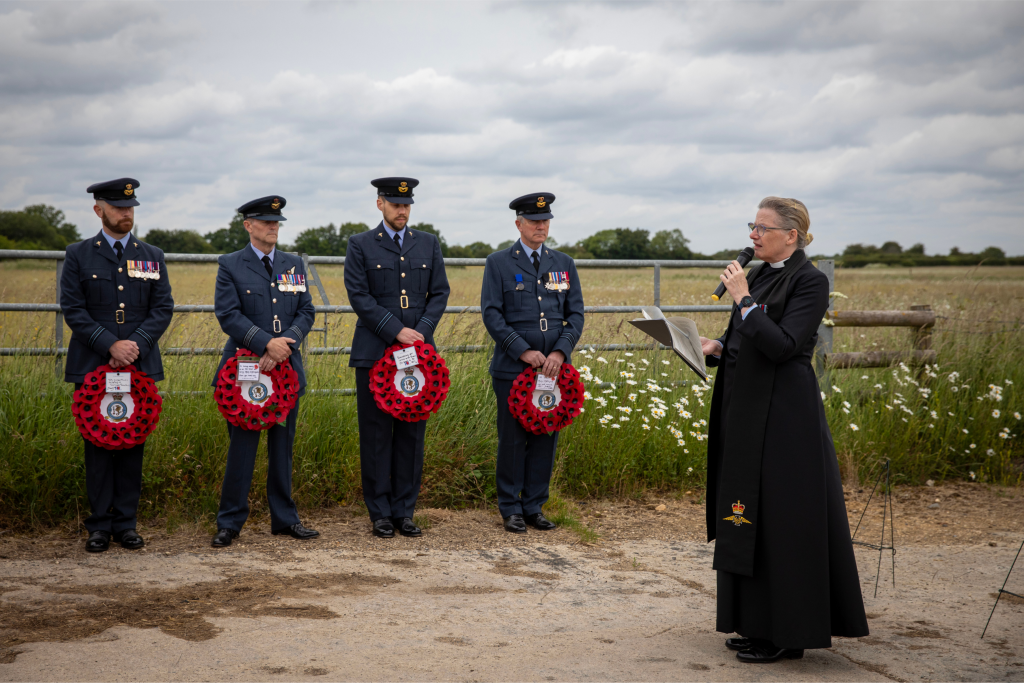An event commemorating the 80th anniversary of the first British women on active service to be officially flown by HM Government into a war zone, has taken place in a quiet nature reserve in Wiltshire.
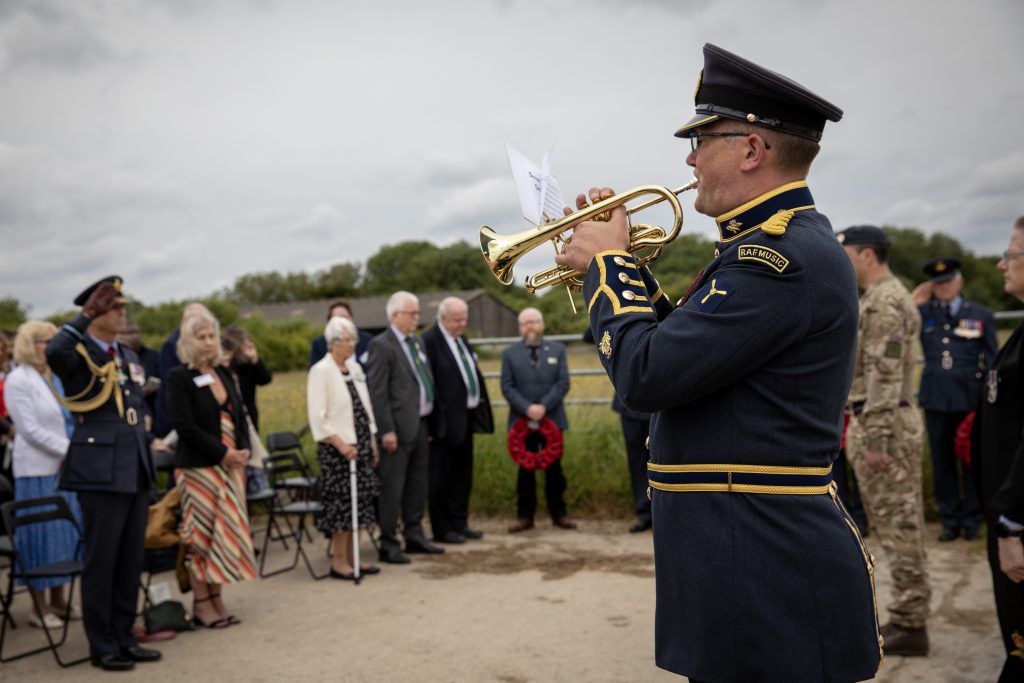
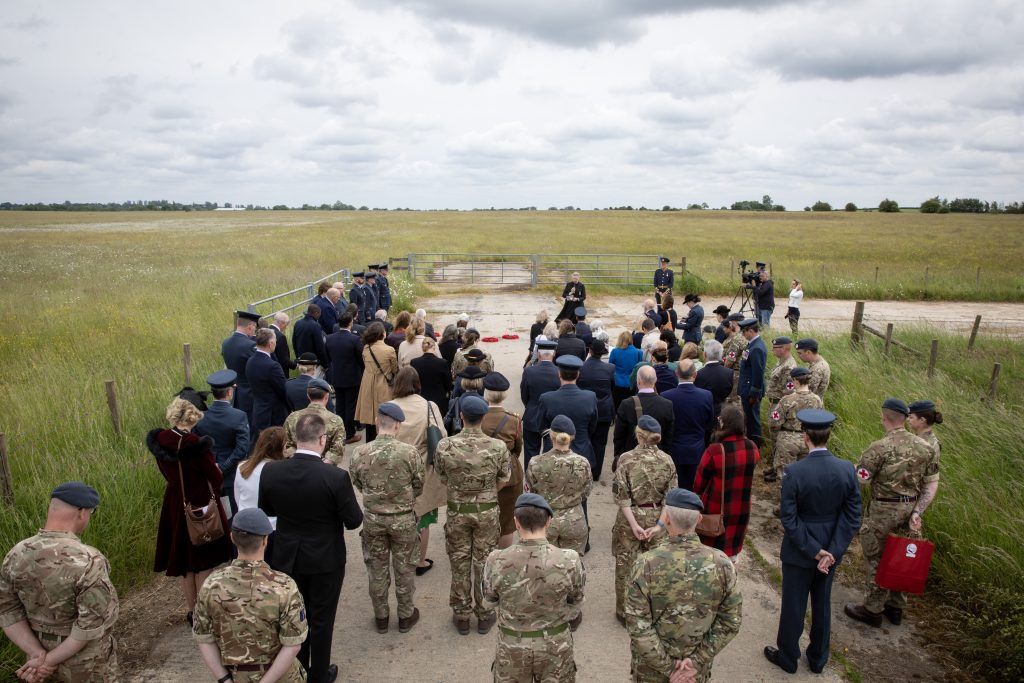
On 13th June 1944, one week after D-Day, three Women’s Auxiliary Air Force (WAAF) nursing orderlies flew from what was then RAF Blakehill Farm to an airstrip in Normandy to undertake the first casualty evacuation flights. Corporal Lydia Alford, Leading Aircraft Women (LACW) Myra Roberts and LACW Edna Birkbeck treated the wounded as they were being flown back to Britain.
The moment of their return was recorded by the waiting press who dubbed these pioneering nurses ‘The Flying Nightingales’.
Gathering 80 years later at the former airfield where those first flights departed, were family members of The Flying Nightingales, serving members of the RAF Medical Services who fulfil the same role today, senior representatives from the NHS and RAF and local dignitaries. The event was a commemoration and celebration of the life-saving contribution made by RAF Medical Reserves, past and present, in what is also the Centenary year of the Royal Auxiliary Air Force.
Those in attendance heard more about the stories of these extraordinary women and were treated to a demonstration of modern aeromedical evacuation capability to highlight the ongoing critical contribution of RAF Medical Reservists, most of whom also have full-time jobs within the NHS. A commemoration ceremony was held at the end of the runway with the last post sounded by a Trumpeter of the Band of the Royal Air Force Regiment in honour of The Flying Nightingales and all RAF Medical Services personnel.
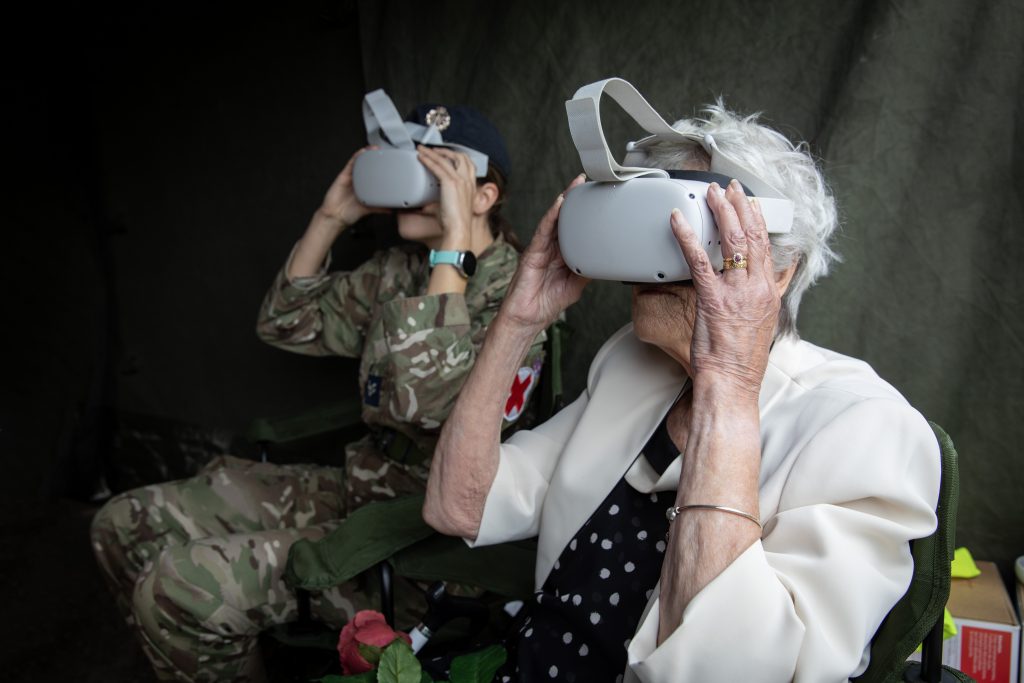
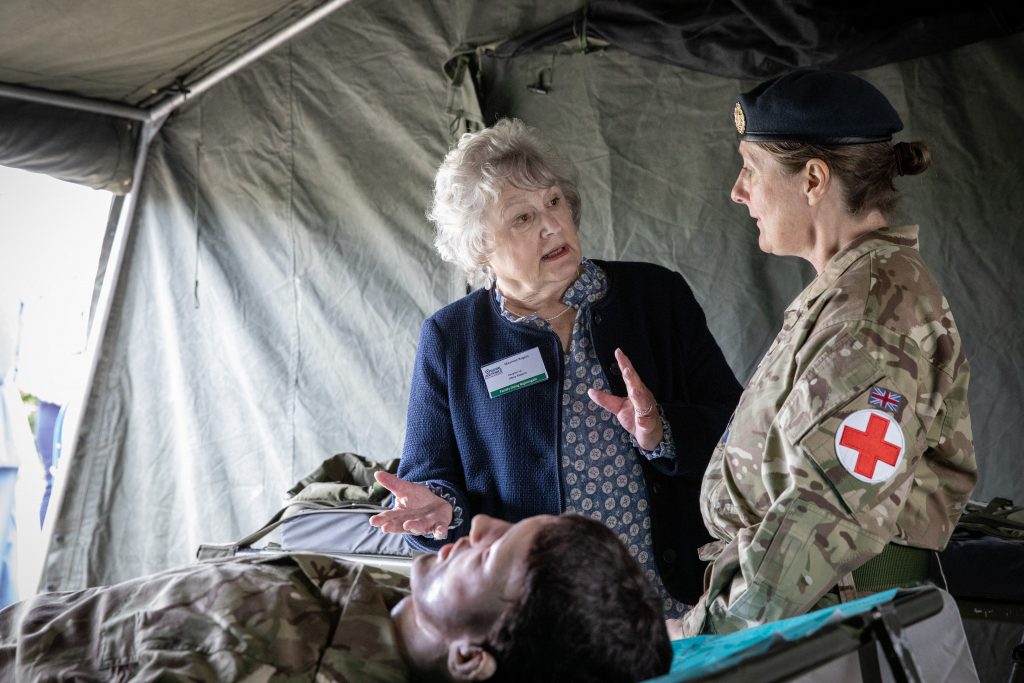
LACW Lydia Alford’s niece, Sheila Lane, remembers seeing her Aunty on a Pathé news reel in 1944. She said:
“On the screen was my Aunty Lydia saluting two officers before boarding an aircraft to go to France. That’s my earliest recollection of her.
“Today means a great deal to me. Growing up, Aunty Lydia was a bit of a heroine and role model for me.
“I have great respect for those that do the same job today.”
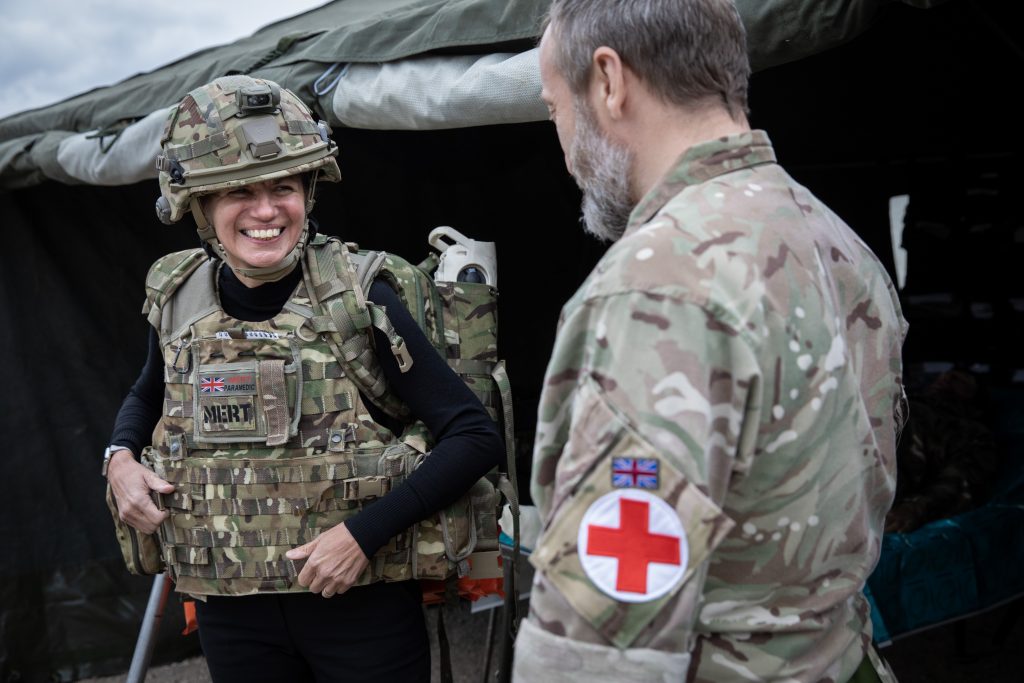
Attending the event, Royal United Hospitals Bath NHS Trust Chief Nursing Officer Toni Lynch, said:
“What an amazing occasion. It’s a great honour to recognise and celebrate the Flying Nightingales and the bravery that they showed eighty years ago today. What they did is still so relevant for us today, both in the military and NHS, so it’s a huge privilege to be here today.”
Speaking at the event, Director of RAF Nursing Services, Group Captain Charlotte Thompson, said:
“It’s a real privilege to be invited here today by 4626 Squadron Royal Auxiliary Air Force, who have put on this wonderful event to commemorate the 80th anniversary of The Flying Nightingales.
“As Head of Nursing for the RAF, it’s incredible to hear the stories of the aeromedical evacuations these inspiring women undertook on a Dakota, and then look at where we are at now in 2024.”
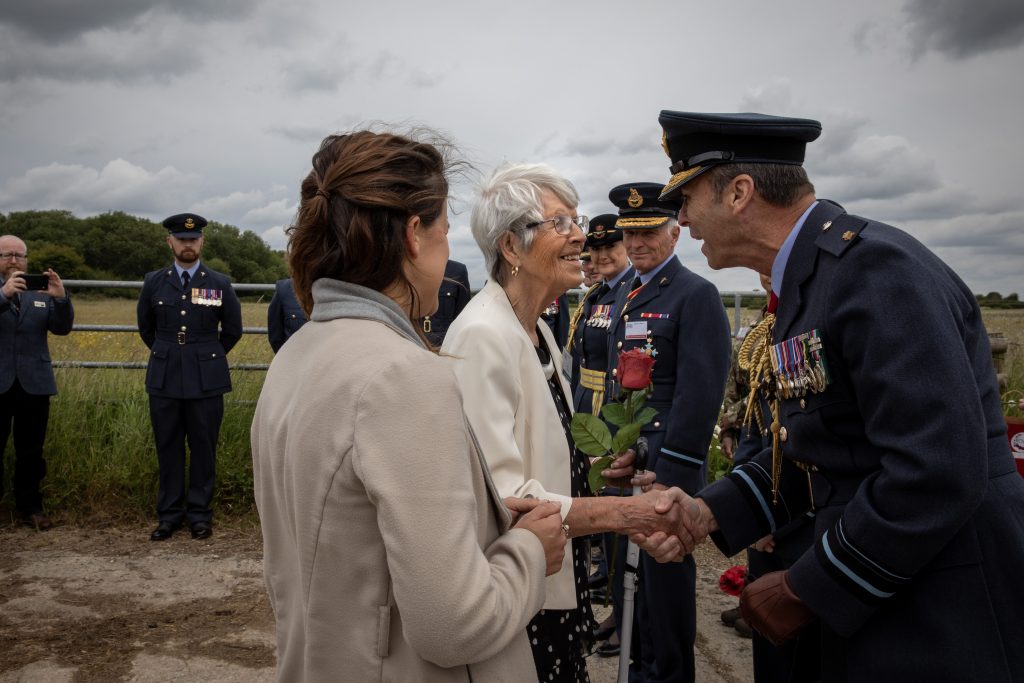
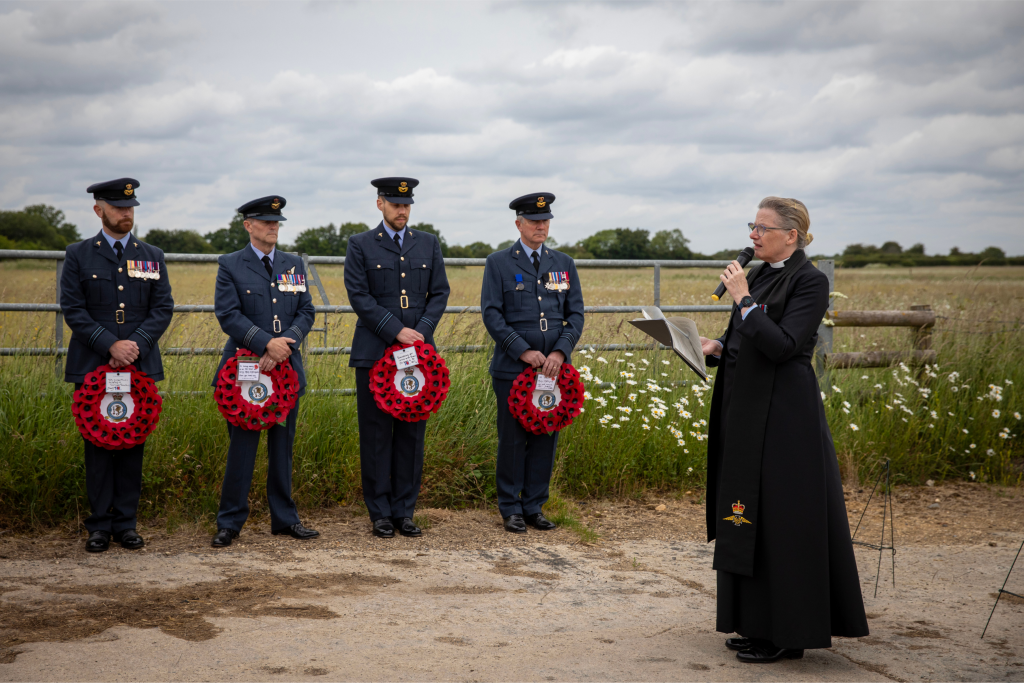
Commenting on the event, Kate Davies, Director of Health and Justice, Armed Forces and Sexual Assault Services Commissioning at NHS England, said:
“With D-Day commemorations recently taking place across the country, we remember those who lost their lives in Normandy and thank all those who have served and are serving. From the battlefield to the NHS, medical reserves are an important part of our clinical workforce – providing much-needed care and support to our patients.”
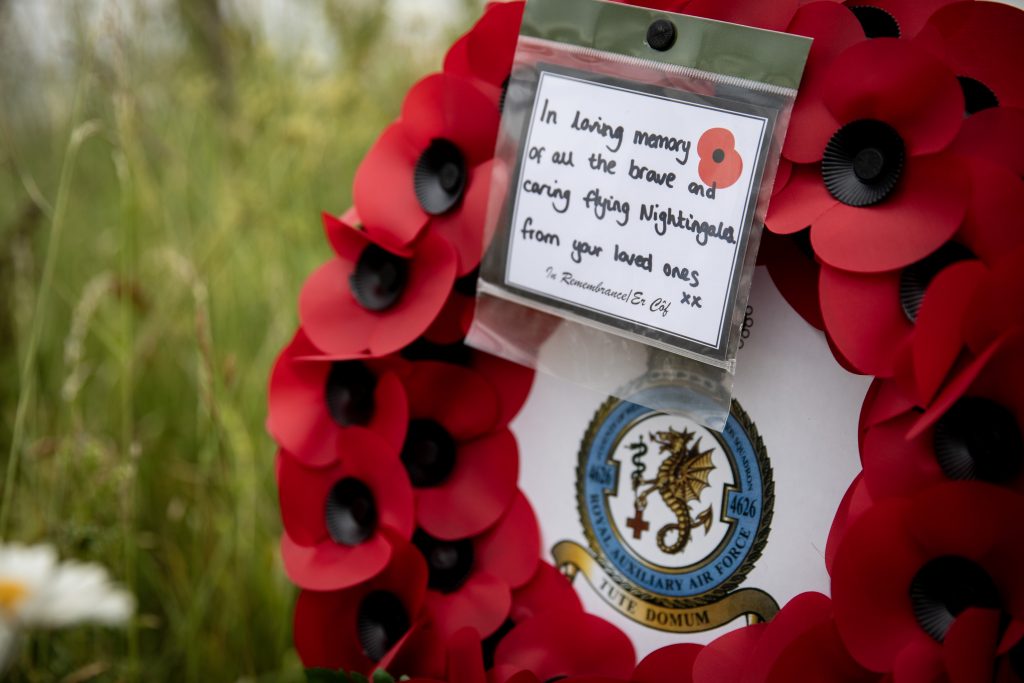
For more information, please contact:
Squadron Leader Peter Lisney, Media Operations
peter.lisney100@mod.gov.uk
Background: History of The Flying Nightingales
In 1941, the nursing orderly trade was first introduced into the Women’s Auxiliary Air Force (WAAF) and volunteers were sought for air ambulance duties the following year. By 1943, hundreds of women had answered the call and over 200 had been trained. Then, in March 1944, the Air Council approved the employment of WAAF nursing orderlies for evacuation from battle areas. Many of the volunteers had never flown before, and their initial training involved a six-week course on treating battlefield injuries and cope with the conditions of flying. WAAF members who passed the examinations were then posted to RAF air ambulance stations ahead of the D-Day evacuations.
On 13th June 1944, one week after D-Day, three WAAF nursing orderlies flew in Douglas Dakota planes accompanied by a squadron of Spitfires from RAF Blake Hill Farm, Wiltshire, to an airstrip in Bazenville, Normandy. Corporal Lydia Alford and Leading Aircraft Women (LACW) Myra Roberts and Edna Birkbeck were tasked to deliver supplies, including medical equipment and ammunition, and medically evacuate casualties back to hospitals in the UK. These remarkable women became known as the first Flying Nightingales.
Despite the medical purpose of these flights, because the supplies taken out contained ammunition and arms, the planes were unable to display the Red Cross, leaving them vulnerable to attack from German aircraft.
Fortunately, all three flights successfully delivered the desperately needed supplies and brought back up to 24 casualties each without incident. Following the success of these initial flights, full evacuation began a few days later. In the first month of casualty evacuation from the Continent, 1,097 stretcher cases and 467 sitting cases were evacuated by Flying Nightingales.
After the D-Day evacuation was completed, The Flying Nightingales continued their work right up until the end of the war, successfully evacuating over 100,000 men from across Europe. Not a single man died while under the care of The Flying Nightingales. Tragically, however, not all flights returned home safely, and two Flying Nightingales lost their lives while in service – LACW Margaret Walsh and LACW Margaret Campbell.
Following the end of the war, the women known as the Flying Nightingales received very little recognition for their important and life risking work. However, in 2008, lifetime achievement awards were presented to the seven remaining Flying Nightingales by the Duchess of Cornwall, now HRH Queen Camilla.
Servicewomen continue the legacy of the “Flying Nightingales” by flying into combat areas to evacuate casualties. However, since the original Flying Nightingales, aeromedical evacuation has evolved from simply transporting casualties and keeping them alive, to mobile treatment areas using technically advanced equipment.

